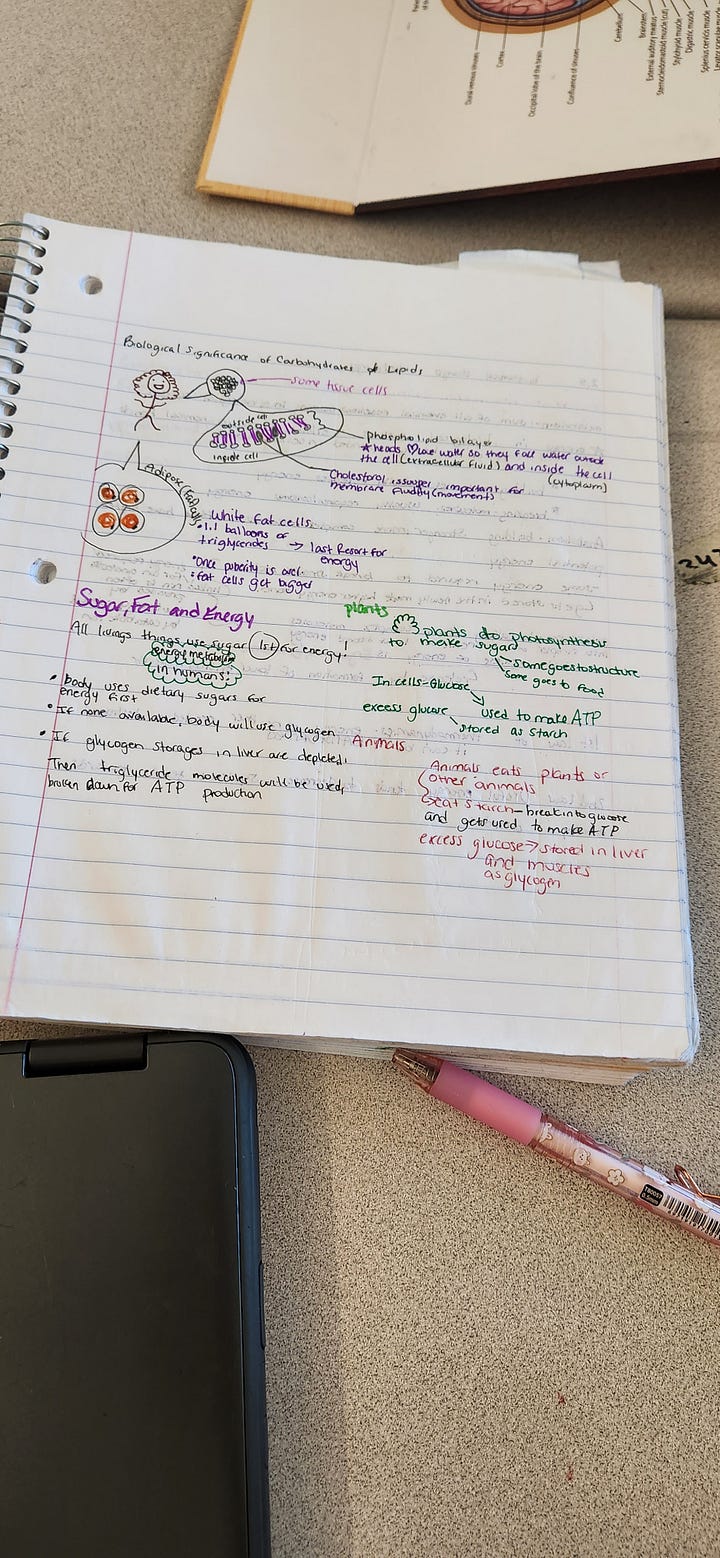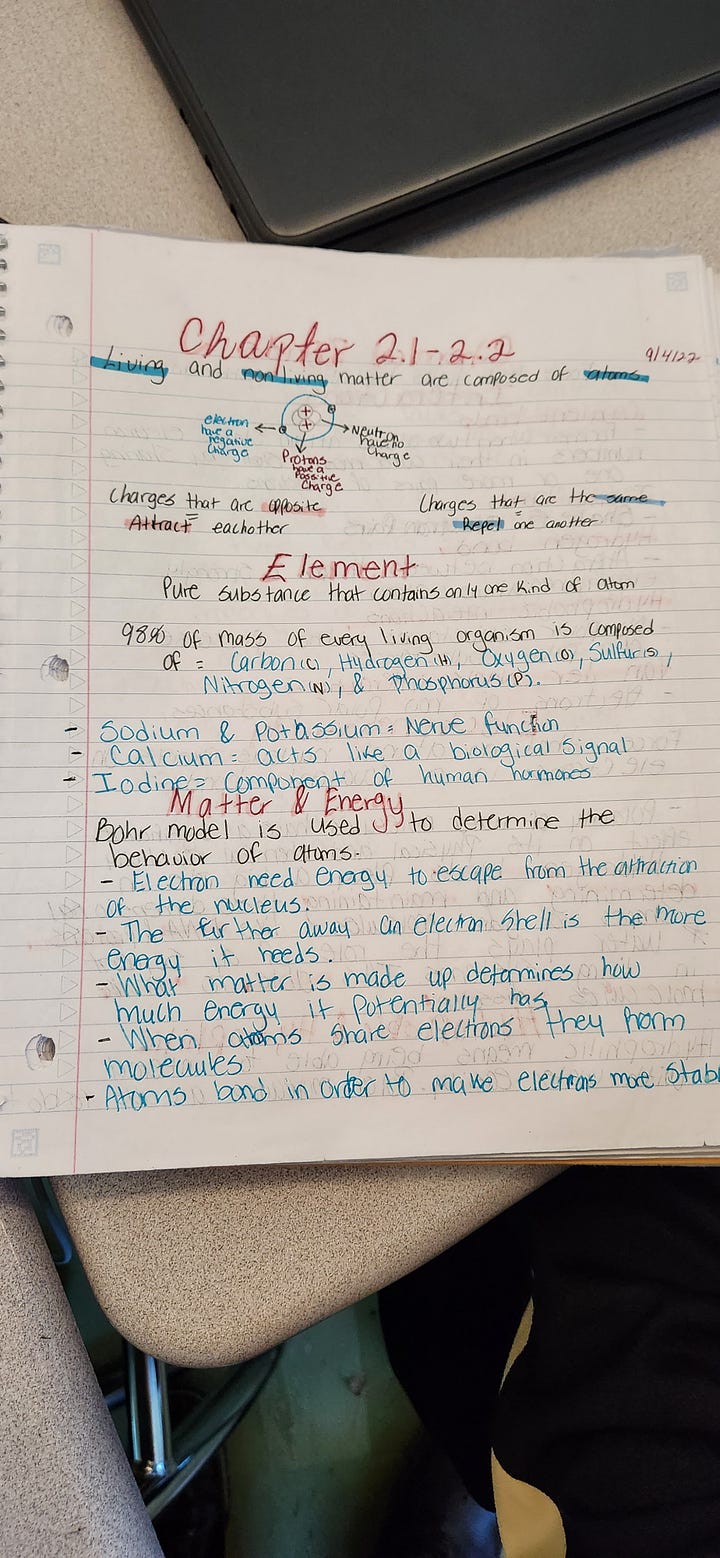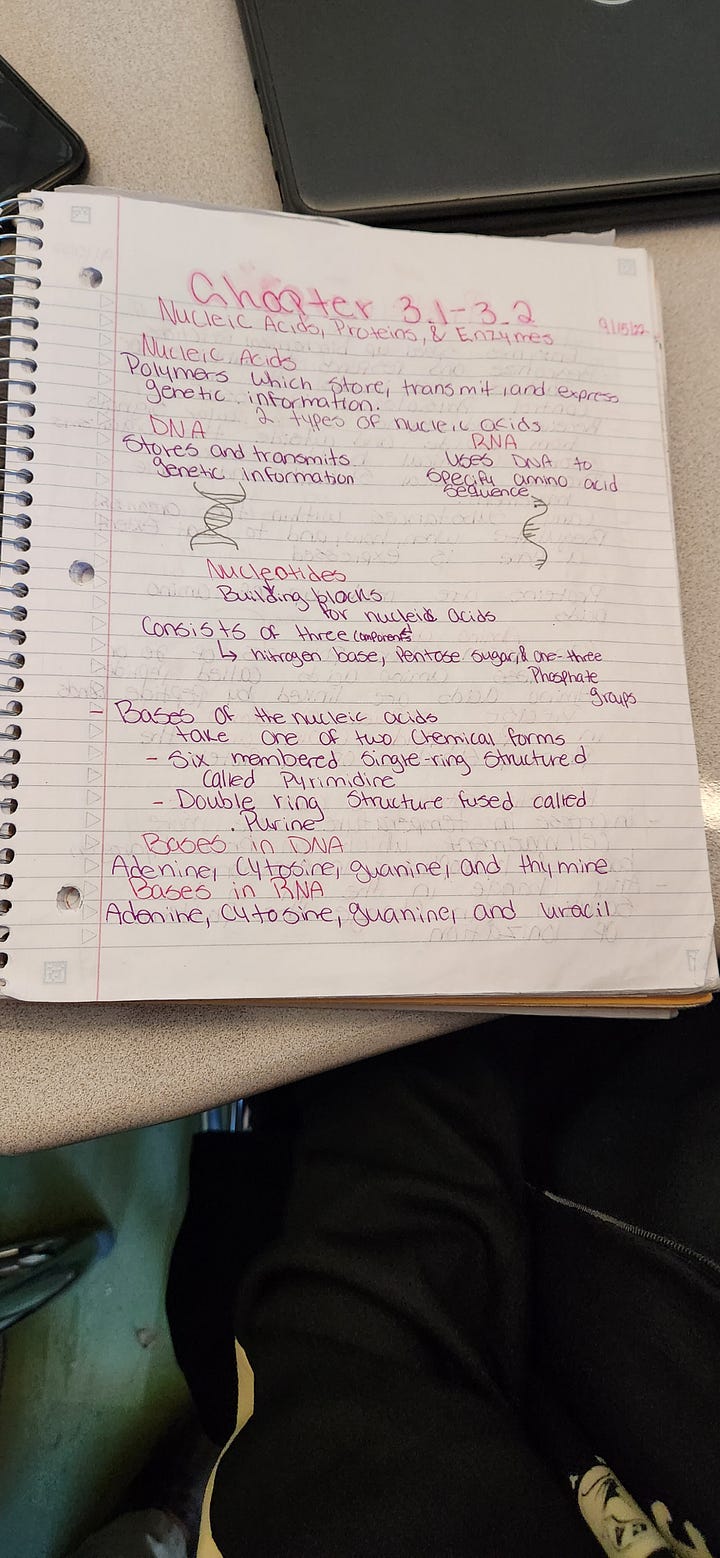



Hi, how are you? I hope you are well. Here in America, there’s going to be an election next week, so I’m just keeping my head down, working away, hoping to ignore it. That’s a complete lie. I subscribe to about 10 different political podcasts that I listen to when I’m driving or too tired to read. But that’s not what this is about…
I keep trying to write a Coaching Letter on complexity, since we’ve been doing so much thinking about that lately, but other things keep coming up that grab my attention. The latest is this article by Carol Ann Tomlinson in Ed Leadership (if you don’t have an account, you do get a certain number of free articles each month). Carol Ann Tomlinson is most famous for her work on differentiation, which we have been talking about a lot lately, because it’s a potentially problematic practice. Here’s what I wrote about it in CL #184, along with some other myths about good instruction (so you should really read the whole thing if you haven’t already):
Differentiation as an overall approach to instruction is too often a reflection of teacher expectations about what students will be able to do, based on what they have done in the past, on assessments which may or may not be salient, and which may or may not be a valid indication of what they can do with the current task. Differentiation is often based on a couple of assumptions that have been debunked. First, there is the idea that we should be “meeting students where they are”, which is actually the exact opposite of what we should be doing, which is moving heaven and earth to ensure that students are working on grade level content…
Here’s how ChatGPT summarized the core message of Tomlinson’s article, which I think is pretty good: "Teaching up" is an approach that reimagines classroom roles and challenges educators to see students beyond labels of “high,” “average,” or “low” ability. Rather than following strict scripts or pacing guides, it encourages teachers to set high expectations, believing in all students' potential for deep, meaningful learning. This approach shifts from traditional lesson planning focused on covering content or addressing needs based on perceived ability levels. Instead, teaching up centers on designing lessons for the most advanced learners, creating a rigorous and supportive environment that all students can benefit from through scaffolded learning. This method fosters dynamic, real-world learning experiences and engagement across the spectrum of student abilities. In practice, teaching up includes strategies like formative assessments, flexible group work, and building positive relationships in the classroom, all geared toward developing each student's capacity as a thinker, problem-solver, and collaborator.
Sounds good, right? Shouldn’t we all be teaching like this? So, here’s what I find interesting and/or objectionable about the article.
Why no mention of differentiation? Tomlinson is the queen of differentiation, having written about a dozen books on the topic. A dozen books! Could it be the attention it has been getting recently as a potentially problematic practice? My favorite article poking holes in differentiation is by Nicole Bannister, a professor at Clemson, who takes issue with both the practices of differentiation and the underlying assumptions as they pertain to race and equity. We have used an excerpt from it in workshops when we are talking about equitable instruction, the section that talks about the myths embedded in differentiation. In particular, she takes issue with Tomlinson’s framing of increased diversity as meaning that teachers now have to take into account more students of color, and that that will entail, ipso facto, greater academic diversity. Hmmm…
Tomlinson writes about teaching as if all the students are “smart” as if that’s a new idea. Yvette Jackson, for example, wrote The Pedagogy of Confidence, which is a lot about high expectations and holding environment. In Tomlinson’s article, she includes a table that is either taken from or adapted from two of her books (sorry, can’t be bothered to check), titled Attributes of Successful Teaching and Learning for Advanced Learners, which includes criteria such as “establishes a culture of high expectations for every member of the class, including the teacher”, and “emphasizes complex, in-depth studies vs. coverage”, and then suggests that perhaps “Teaching up asks us to choose to translate those understandings into powerful classroom practices that benefit the widest possible range of learners." So, what is the message? Is it, “I’ve been advocating for these practices for a while now for advanced learners, and now it’s finally occurred to me that all students might benefit from them?” Hmmm…
I really loathe the language of “smart” as if it’s a property of the student, whereas actually it’s much more about the knowledge that students already have schemata for. In reading, this is called the Matthew Effect, the phenomenon where early advantages in reading ability lead to increasing gains over time, while early disadvantages lead to a widening gap. Keith Stanovich, a cognitive psychologist, coined the term in 1986, referring to the biblical principle from the Book of Matthew: "For unto everyone that hath shall be given, and he shall have abundance, but from him that hath not shall be taken away even that which he hath" (Matthew 25:29). In reading, this effect suggests that children who acquire reading skills early on tend to read more, gain more vocabulary, and improve comprehension, creating a positive feedback loop. Conversely, children who struggle with reading early face fewer opportunities to practice, leading to slower vocabulary growth, comprehension issues, and a compounding of reading difficulties. Essentially, the Matthew Effect highlights how early proficiency, or lack thereof, can significantly impact future learning trajectories. And this is true across subjects, of course.
Tomlinson takes issue with checklists and recipes. She doesn’t think that teaching can be reduced to scripts. I think that’s the wrong way to think about standard work. Pilots have standard work, lawyers have standard work, surgeons have standard work. It exists to ensure that professionals are employing the best known methods to get the best results, and to free up cognitive resources so that they can pay attention to the aspects of any given situation that are unexpected or especially challenging. It is because teaching is so difficult that teachers benefit from standard work; why on earth would you make something that is already so difficult even harder by making teachers create everything from scratch? There’s a lot of good stuff written about this: chapter 2 of Learning to Improve, Atul Gawande’s Checklist Manifesto, and Coaching Letter #190.
Tomlinson does have recommendations. Here they are:
1. Take stock of how connected each of your students feels to you, how connected you feel to them, and how well you know them as individual human beings and learners. Learn about their strengths and dreams. Watch them. Create opportunities to talk with them, to affirm their strengths, and to acknowledge when they take risks in learning.
2. Be sure students have ample opportunity to see you value each member of the class for who they are and what they bring to the group. Find ongoing ways to help students learn more about one another. Begin using short-term flexible groupings for a range of instructional purposes. Model close listening, respect, and empathy for each student and ask them to model those traits for one another as well.
3. Consider how connected each of your students feels to other students in the classroom. Provide frequent opportunities for them to collaborate in a wide variety of flexibly constructed groups. Observe them carefully. Teach them skills needed for successful collaboration. Point out successes—and opportunities for growth.
4. Think about how your students respond to various aspects of the curriculum you teach and to instruction. When are they curious or jazzed about ideas, engaged in problem solving, generating ideas, or having meaningful conversations with peers? When are they “in neutral” or tuned out? Think about who is often tuned out, why, and what you might do in terms of curriculum design to make learning more inviting.
5. Begin using formative assessment regularly in your classroom and apply what you discover as you plan upcoming learning experiences.
6. Reflect on ways you already scaffold student progress as they encounter learning challenges. As students work, ask them what would help them feel more confident and be more successful. Begin to expand your repertoire of scaffolds.
It’s not like this is a terrible list, but it is an inadequate and misleading list. The first three items are about connection and belonging. THESE ARE SUPER IMPORTANT. But hidden in here is language about knowing your kids as individuals, and I’m not saying don’t do that, but this constant pull towards the individual is like catnip for some authors, where much more important is the classroom context that teachers create. Geoffrey Cohen calls this “situation crafting.”The fact that the situation is more important than the traits of the individual is one of the central tenets of social psychology, and has been for decades. Yet it’s very hard for people to get their heads around. We wrote a good summary of it in the chapter on the psychology of change in Equitable School Improvement, and I also highly recommend the book Mindware: Tools for Smart Thinking, by Richard Nisbett.
The part about curriculum design is just wrong. Teachers do not have the power to alter the curriculum. I think she’s thinking about the content of individual lessons, like kids getting to choose what book they want to read during independent reading, but the curriculum should be the same for everyone, and the whole point of the curriculum is that it should be guaranteed and viable. You can’t just have teachers deciding what to teach as though that doesn’t have consequences for kids.
For sure use formative assessment in your classroom, but not for future lessons, for what’s happening right now. As we like to say, an exit slip is too late. Here’s the Resources on Formative Assessment that I put together for our Acceleration Workshops during the pandemic. It’s pretty good.
And scaffolds… another potentially problematic practice. This blog post by Juli Dixon is super useful on that topic, and the language of just-in-time versus just-in-case really resonates with people, in our experience. Tomlinson’s advice, on the other hand, is hopelessly vague and doesn’t touch what separates good v. bad scaffolding.
So Isobel, I hear you say, it’s easy for you to rip into another author. Do you have any suggestions? Why yes, yes I do.
So I’m going to repeat what I talk about at pretty much every workshop or session I’m involved in. This is the idea that there should be, across a district, a shared understanding of what high quality instruction should look like, and that the definition thereof should be firmly grounded in equitable practices, by which I mean, those instructional practices that are most likely to lead to student learning, and are least susceptible to distortion by teacher bias. And I would just like to repeat that teachers have biases, in the guise of what is typically called teacher expectations, not because they are bad people but because they are just like the rest of us. So here is the very boiled down version of the model for equitable instruction that we’ve been working with. And as I feel like I keep repeating, we’re writing a book about this. And if you want to see the most recent video of me talking about it (which was a while ago now—I’ve gotten better), here it is.
All kids should be engaged, to the greatest extent possible, in grade level content. We understand that this is not universally possible, and there may be very good reasons for teaching particular skills and content that are stipulated in other grade levels, but grade level should be the norm, and should not be within the purview of an individual teacher to alter, despite what Tomlinson says about curriculum design.
All kids should be engaged in meaningful tasks that give them the opportunity to connect new knowledge and skills with their existing schemata, and when I say meaningful, I mean require meaning-making on the part of the students.
All kids should be asked to make their thinking visible, so that…
The teacher can respond to the learning that’s going on in the classroom IN REAL TIME. This is a very important point. The method in Peter Liljedahl’s Building Thinking Classrooms is a fine example of how to do it, although he calls it keeping students in Flow. Tomlinson, on the other hand, gives the example of Shyla, a 4th grade teacher, who gives an assignment (that is differentiated without Tomlinson’s calling it differentiation) and then the teacher holds her breath until the students turn in their assignments days later! I don’t know what Tomlinson thinks formative assessment is, but this teacher isn’t doing it.
All students should experience a classroom holding environment where they feel both challenged and supported. I have written about this a lot: Coaching Letters #178 and #179.
I’m not suggesting that this isn’t big and complicated and difficult, but it is a hell of a lot better than Tomlinson’s ball of cotton wool.
I hope you find this useful. I would love to hear what you think. Please reach out if there is anything I can do for you. Best, Isobel



